47 Souvenirs from All 47 Prefectures!
Kyushu & Okinawa
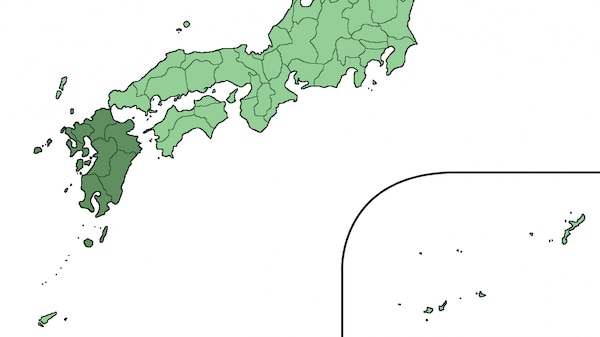
https://commons.wikimedia.org/wiki/File:Japan_Kyushu_Region_large.png
Kyushu, the south-westernmost of Japan’s main islands, is home to seven prefectures: Fukuoka, Kumamoto, Nagasaki, Oita, Saga, Kagoshima and Miyazaki. We've added Okinawa to this list, but as the island chain has a flavor all of its own, you really should check out its Top 3 souvenir selections as well!
Fukuoka — Hiyoko

http://www.ulearnjapanese.com/fukuoka-adv/shopping/popular-fukuoka-omiyage/
Shigeru Ishizaka, looking for an innovative new snack, created this three-dimensional baby chick and named it Hiyoko. The smooth filling of pea beans and fresh eggs complements the slightly savory exterior so well that the original recipe has remained unchanged to this day. This is the first-choice souvenir for anyone visiting Fukuoka.
Kumamoto — Musha Gaeshi
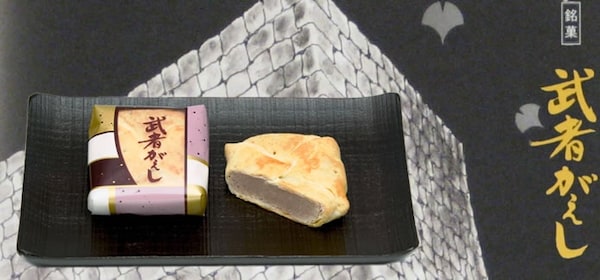
http://item.rakuten.co.jp/jrk-shoji/10001928/
Kumamoto Castle was an extremely well fortified castle, and the musha gaeshi (warrior repelling) stone walls that protected it were the inspiration for this regional specialty. The red bean filling uses peeled beans, which puts more emphasis on its sweetness, while the incredibly flaky exterior is made of 100 layers of dough expertly prepared by hand. No wall is tall enough to stop us from getting to these goodies!
- item.rakuten.co.jp (Japanese)
Nagasaki — Castella
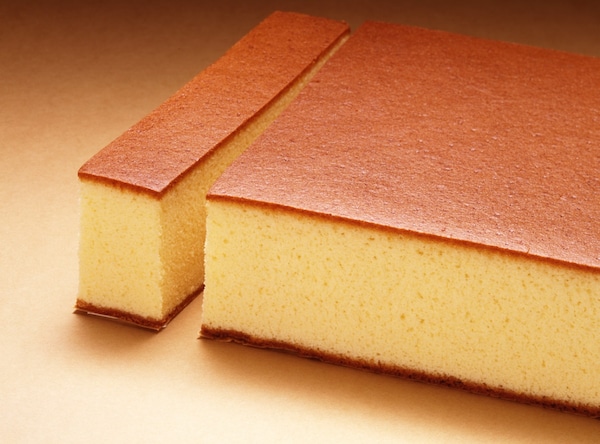
http://blog.japancentre.com/2014/10/08/explore-japan-nagasaki/
Castella is a Japanese sponge cake based off a Portuguese bread first brought to Japan in the 16th century. This light cake is incredibly simple, made from flour, sugar, honey and eggs, but some specialty shops put their own spin on this classic.
Bunmeido is perhaps Nagasaki’s most popular castella shop, and it can be found on a corner not far from the historic Dejima quarter. The shop has been around since 1900, but saw a spike in popularity in the 1960s thanks to a popular TV commercial featuring dancing and singing kitten marionettes.
Oita — Zabieru
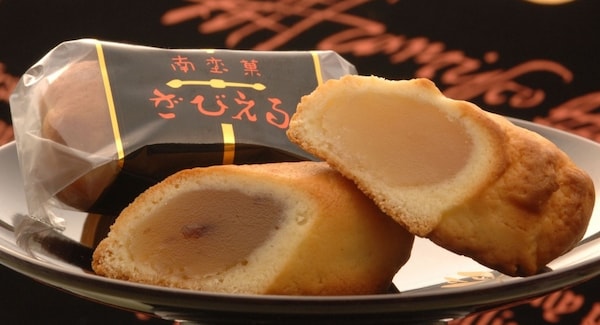
https://allabout-japan.com/en/article/1797/
Zabieru might be hard to say, but St. Francis Xavier is hardly unrecognizable. Having completed his missionary work in Japan on November 21, 1551, he departed from Oita Prefecture, and a statue of him now stands across from Oita-joshi Park in Oita City.
He also has a cake named after him: Zabieru (the Japanese pronunciation of his name), which consists of a white, sweet bean paste or sweet bean paste with rum raisin, all wrapped with a buttery biscuit dough.
Saga — Shiratama Manju

http://blogs.yahoo.co.jp/koji60071129/14884155.html
If you ask someone about the perfect souvenir from Saga Prefecture, it won't be a long story. Shiratama Manju, or steamed "white ball" rice buns, have been a local favorite for over 100 years. And the recipe, using non-glutinous rice, red beans, sugar and a touch of salt, hasn't changed since 1882.
- item.rakuten.co.jp (Japanese)
Kagoshima — Karukan
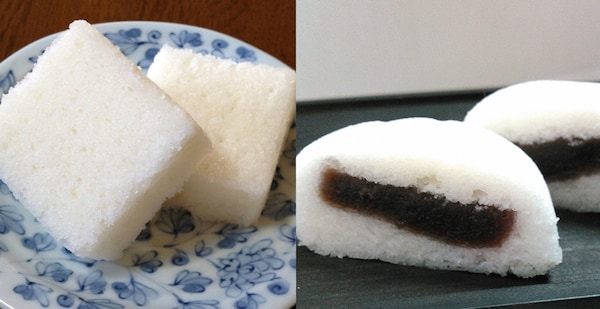
https://ja.wikipedia.org/wiki/%E8%BB%BD%E7%BE%B9
Our selection from Kagoshima Prefecture can be none other than Karukan, a portmanteau of the words karui, meaning light, and yokan, a traditional Japanese confection usually sold in blocks. Made from long mountain yam finely shredded and combined with sugar and rice flour, Karukan normally look like slices of white bread. However, they're also made into a bun filled with a smooth red bean (anko) paste called Karukan Manju.
Miyazaki — Hyuga no Kaori Yokan
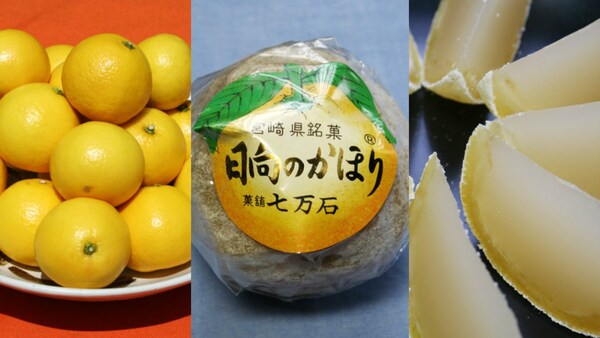
http://kyotofoodie.com/miyazaki-omiyage-hyuganatsu-yokan/
Hyuganatsu, thought to be a mutation of the Japanese citrus yuzu, is a regional specialty of Miyazaki Prefecture, and the base for Hyuga no Kaori Yokan (a traditional Japanese sweet with the fragrance of hyuga). This remarkable confection was created in 1873 using the juice, zest and pulp of the fruit to flavor yokan jelly, which is then poured back into the fruit's husk. After that, the entire outer skin is completely candied, making the whole thing edible. The hyuganatsu fruit itself may be a bit bitter, but this ingenious way of eating it is just one of many reasons to make the trip to Miyazaki.
Okinawa — Chinsuko

https://www.pinterest.com/pin/6896205651090071/
Found in practically every omiyage shop in Okinawa, Chinsuko are shortbread-like cookies made of flour, lard and sugar. Chinsuko were imported during the 15th century, when Okinawa was part of the Ryukyu Kingdom and trade with China and southeast Asia was frequent. These treats come in several flavors, including vanilla, mango, chocolate, sweet potato, coconut and pineapple, guaranteeing something for everyone.
That's it: 47 omiyage from 47 prefectures! Now for the real question: How many have you tried?



